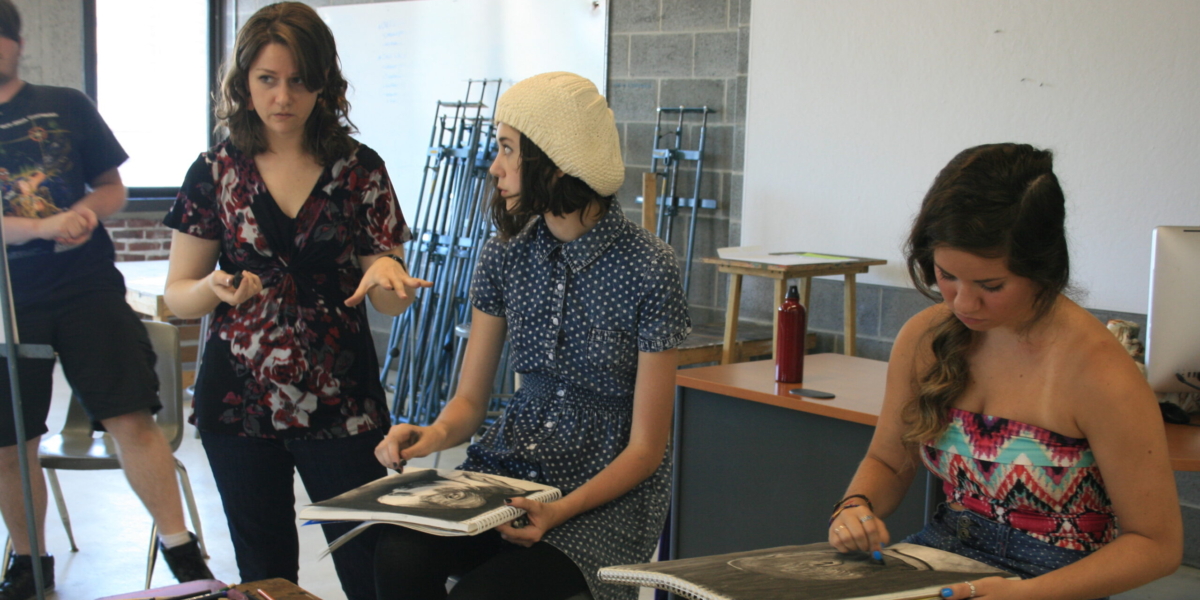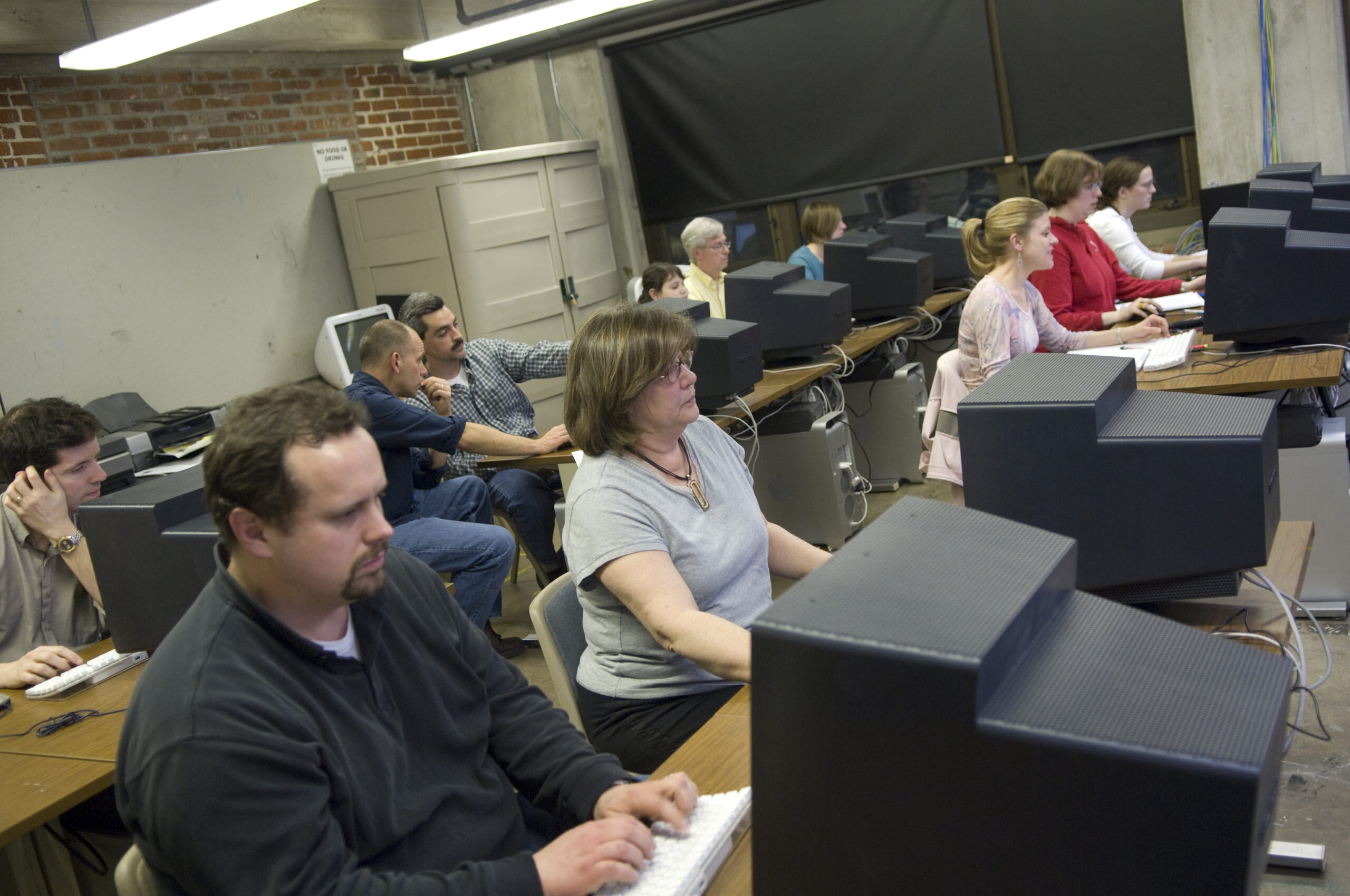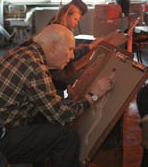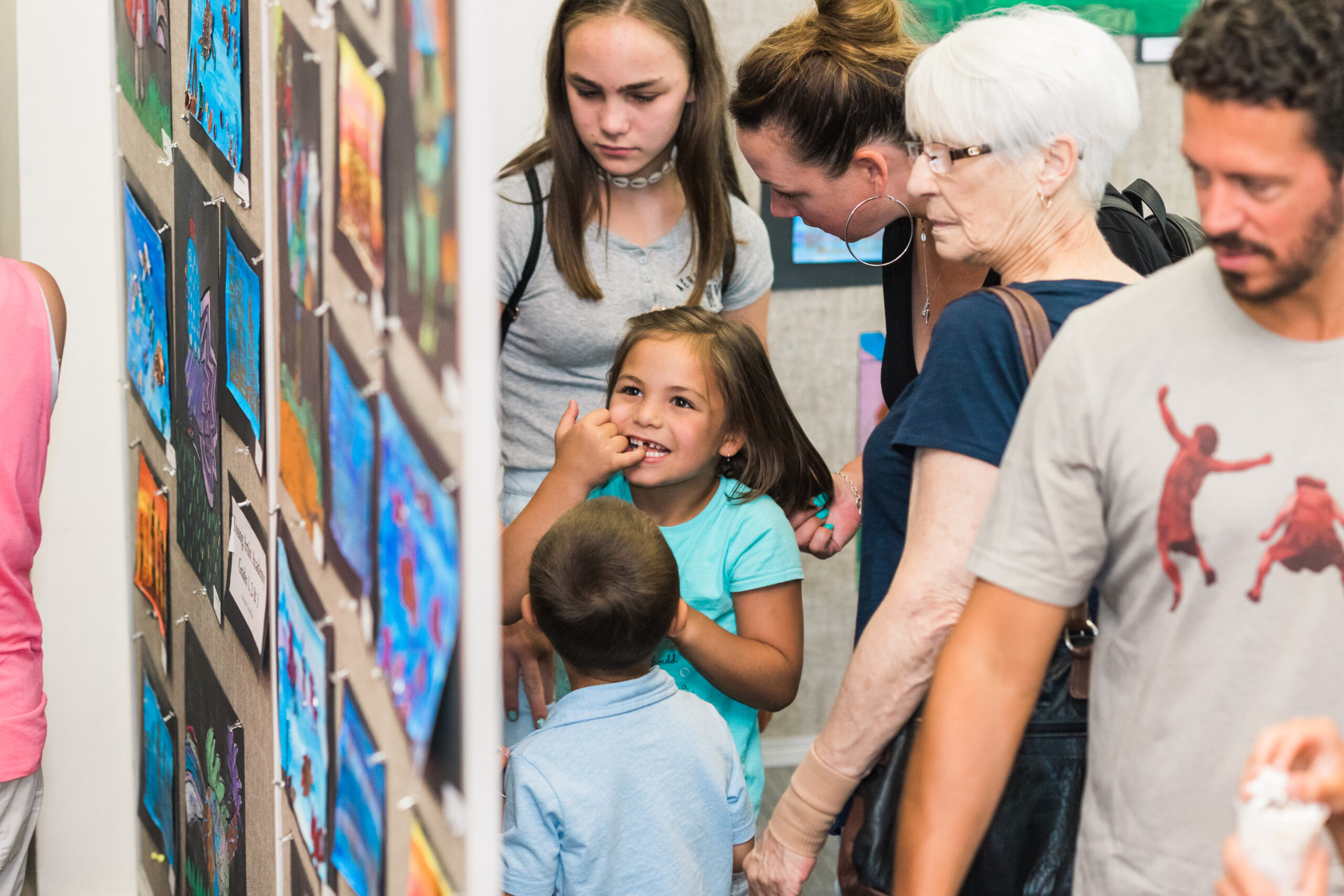
Celebrating 30 years of learning with PCA&D’s Center for Creative Exploration
Wednesday, December 13th, 2023
In 1993, a program was started at PCA&D to engage the community in the creative life — and now, after decades of program growth, expanded opportunities, and a couple name changes, the Center for Creative Exploration celebrates its 30th anniversary.
Thousands of students, from first-graders to retirees, have signed up to take part in this ever-expanding program. They’ve earned professional certificates, built on professional knowledge, tried art techniques for the first time, become summer day campers, and had the chance to discover new corners of their creative minds.

Remember those bulky computer monitors of the early 2000s? Here, an evening continuing education class works on their skills.
The beginnings
From the start, “the main focus was community outreach,” says Tracy Beyl, the first Director of continuing education (CE), which was then called Open Studies. Through the Open Studies program, community members were able to take classes and workshops taught by creative professionals. She credits former Dean of Students Pam Richardson with kickstarting the Open Studies program, drawing on her own experience at School of Visual Arts in New York City. Certificate programs soon followed, and a pre-college program began with the goal of it becoming a feeder program for the College.

Art class in 2000.
What started as a program supporting 100 to 200 students a year soon grew to around 1,200 under Beyl’s tenure. With year-round programming, Open Studies served the creative community through robust youth and pre-college programs, especially during the summer session, as well as through Certificate Programs in Interior Design, Web Design, Digital Design, Social Media Marketing, and Photography.
Says Beyl, “former College President Mary Colleen Heil was very supportive of the CE program and encouraged new courses and community engagement.”In addition to institutional support, CE was supported by the growing arts community. Beyl reflects, “as the art scene in Lancaster grew the program also grew.” Many CE instructors were, and still are, working artists from the surrounding community. Beyl shared, “There were, and continue to be, so many fabulous artists in the Lancaster community and new artists moving in all the time so it was very inspirational. I loved my job — what could be more fun than meeting new artists and collaborating on new course ideas where they could share their knowledge and passion with the community?”

Showing off summer camp work at a family and friends reception, 2019.
Today
In the years since its inception, Continuing Education has only continued to grow. Renamed the Center for Creative Exploration (CCE) in 2020, CCE now reflects an expanded mission. Sometimes, says current CCE Executive Director Natalie Lascek, CCE has been “a place that allows something to find a home that is still desired in the community, but might not fit the traditional BFA structure. And sometimes (CCE) has been a place for new things to be tested and to grow.
“I think the point is that CCE has always been flexible. It allows experimentation in some areas, and consistency and dependability in other areas, like the Adobe-focused programs and our Young Artist program.” That flexibility has not only been crucial to the program’s longevity, Lascek notes, it also helps it to grow in ways that the community wants, and can utilize.
Many classes have an expanded focus on intergenerational learning opportunities, and CCE has also been boosting the number of culturally relevant classes that reflect the local community at large. There are now more classes — the upcoming Winter session boasts nearly 100 class and workshop offerings — and more students served than ever before. Nearly 850 enrollments were counted in CCE’s classes and workshops for FY 2023. But what other aims does CCE have as it launches into its 31st year?
Along with providing “a solid platform for artists to share their craft as instructors and to hone their craft as educators,” Lascek says, CCE also continues to create opportunities for those instructors and artists to reflect our community. Another key goal: forming a strong pipeline of not just future creatives, “but strong arts supporters and advocates.”
“Building an easily accessible entry point to PCA&D,” whether for a certificate, an associate degree or a BFA is always a primary aim, Lascek adds. Special community events, such as Art at Brunch and Art Recess for Adults, are other low- or no-cost ways that CCE works to get the community involved in exercising their creativity.
“The arts belong to everyone at all ages,” Lascek says, “and we’re always building credentials and building classes that respect that lifelong learner.”
Top: Students at work in the early 2010s.
